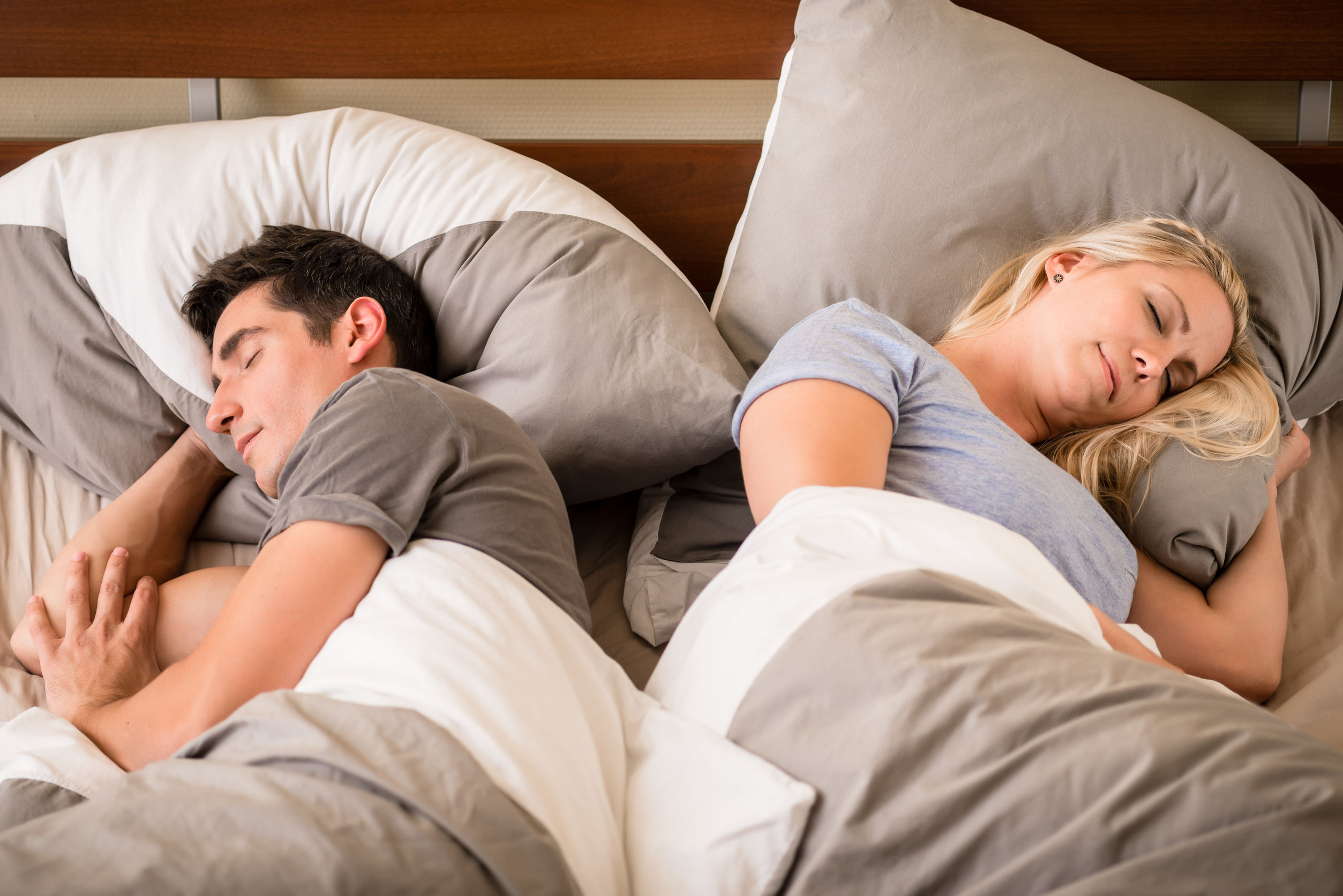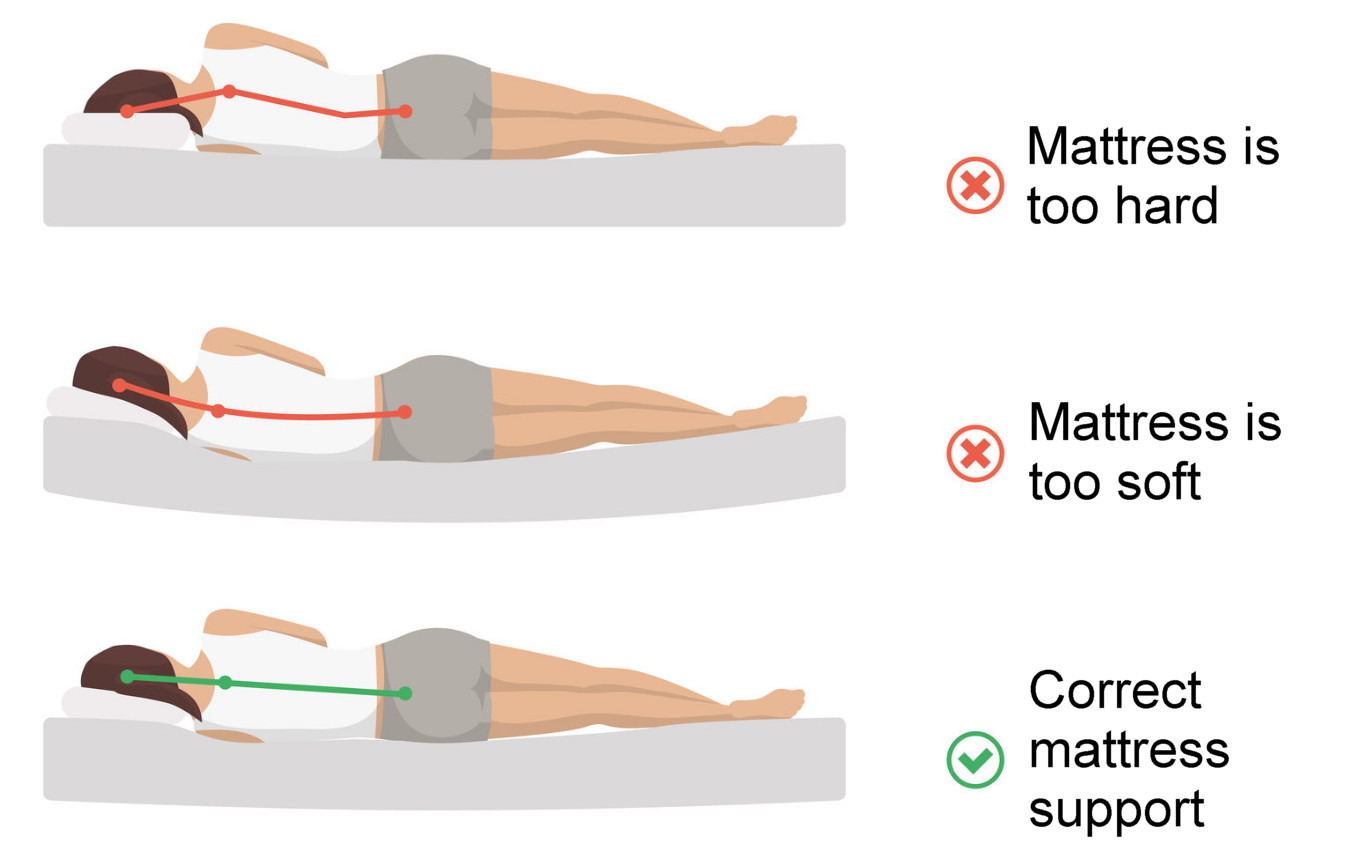How Your Sleeping Position Affects Your Posture, Proprioception, and Pain
Aside from where you work, the place where you probably spend the most time is your bed. If you suffer from any type of musculoskeletal pain or tension, especially in your neck, shoulders, back, or hips, you should consider how your sleeping position might be contributing to your pain or tension.
If you’re not in pain but you have a postural issue, be aware that it could be made worse by the way you sleep. Spending 8 hours every night in a certain position makes you more comfortable in that position because your proprioception (your internal sense of your body position) adapts to it. So if you sleep with your spine curved to the same side every night, after a while that curve will feel normal and straight.
In this post I’ll talk about how common sleeping positions can cause or exacerbate pain, tension, and poor posture. And while I encourage you to improve your sleeping position if needed, I want to emphasize that the most important thing is to get a good night’s sleep. Getting deep, restful sleep is critical for reducing stress and healing from pain and stress-related conditions. If you want to train yourself to sleep in a different position, be patient—it will probably take some time to become comfortable enough in your new position that you are able to fall asleep and stay asleep there.
The position to avoid above all: Sleeping on your stomach
Many people who sleep on their stomach experience neck pain and tension because their head is turned to one side or the other, keeping muscles in their neck and shoulders contracted or stretched all night long. Lying on the stomach with the head turned to the side also puts pressure on the cervical vertebrae, potentially causing nerve compression and tingling or numbness in the arms and hands. Headaches can be caused or made worse by compressing the neck muscles and cervical vertebrae. And lying on your stomach puts pressure on your lower back, contributing to muscle tension and disc problems.
Lying on your stomach can feel very safe and calming, because it protects the most vulnerable parts of your body. But if you have neck or back issues, it will be worth the time and patience it takes to train yourself to sleep on your side or your back.
The general approach I recommend when training yourself to sleep in a different position is to start by spending some time lying in that position when you first get in bed at night. You can start by lying in your new position for just 5 or 10 minutes, and gradually increase from there. Do some deep breathing and relax in that position as much as possible, while at the same time not putting any pressure on yourself to fall asleep—know that you can roll onto your stomach whenever you want to.
Over time, you’ll gradually become more comfortable in your new position, whether it be on your side or your back, and at some point you will finally fall asleep there!
If you like stomach sleeping because it feels safe and comforting, try sleeping on your side while hugging a big pillow or body pillow. The pillow can substitute for the protective sensation you feel when lying on your stomach.
Side-sleeping: The way we slept as we evolved
During the Miocene epoch (23 to 5 million years ago), apes began growing bigger. Around 14 to 18 million years ago, apes started building sleeping platforms in trees to support their increasing size and weight. This is when they switched from sleeping sitting up in trees to lying on their sides. Not only did the sleeping platforms support the apes more securely, but they also allowed the apes to get more deep, non-REM sleep—which scientists believe improved cognitive ability and contributed to their evolution.
Large primates and people in tribal cultures sleep on the ground in various side-sleeping positions with no pillow, as illustrated in this article by physiotherapist Michael Tetley. If you sleep on your side, you’re among the majority of civilized people as well—surveys estimate that around 70% of us sleep on our sides. Even though side-sleeping is instinctive to us, we need to be aware of how it can contribute to poor posture, tension, and pain.
The main thing to consider is the alignment of your spine while you’re sleeping. You spend around 8 hours every night in this position, so imagine standing in that same position all day. When you’re sleeping, your spine should be aligned from your tailbone all the way up to the top of your head.
If you sleep on your side, use a pillow that allows your neck to be straight. It shouldn’t be too full or too flat—it needs to be just right. Formed pillows that provide shaped support for your neck and head can be very comfortable, but whether or not you find one necessary is a personal choice.
Mattress firmness is very important for side sleepers. Your hips and shoulders must be able to sink down a bit so that your spine remains straight, as shown in the illustration below. Appropriate mattress firmness depends on body weight; the heavier you are, the firmer your mattress should be to provide the right amount of support. Side sleepers may find that putting a small pillow between their knees improves overall alignment and reduces lower back pain.
In addition to getting your spine into as neutral a position as possible, it’s important to notice which side you tend to sleep on more. If you tend to sleep more or only on one side, here is my advice:
-
Can you sleep comfortably on your other side? If so, try to start alternating between sides.
-
If you can’t sleep on your other side comfortably, why not? Notice where you feel tension, discomfort, or pain, and use it as information. One of the most likely reasons you aren’t comfortable sleeping on one side is that your obliques on that side are tight and unable to lengthen out, and your shoulder and hip feel uncomfortable as a result. If this sounds like it might be your issue, do the Side Curl with that side several times before getting in bed. Lie on the floor on the side on which you normally sleep, curl up to your tighter side, and release down extremely slowly. When you get in bed, it should then feel easier to lie on your tighter side.
-
Be aware that being able to sleep only on one side comfortably is a sign that you have different patterns of muscular tension on your right and left sides, and that your standing posture may be off-balance as a result. Be aware of how you sit, stand, and use your body throughout the day. When you do your daily practice of Clinical Somatics exercises, notice how your right and left sides feel different, and spend more time working with your tighter side.
If you have a condition like shoulder or hip pain or sciatica that truly prevents you from sleeping on one side, then don’t worry about the fact that you can only sleep on one side. Focus on getting your spine into alignment while lying on the comfortable side, on using somatics exercises to relieve your pain, and most importantly, on getting a good night’s sleep.
Sleeping on your back: The future of sleep?
Sleeping on the back is the least common position, favored by around 8% to 10% of us. Instinctive, primal sleep positions always protect the front of the body, and sleeping on the back is the opposite of that—it leaves us completely vulnerable to attack. So, it makes sense that it doesn’t feel natural for most of us.
However, health professionals agree that back-sleeping is the healthiest way for to sleep. As long as you don’t use a pillow (which I’ll talk more about below), sleeping on your back keeps your spine in alignment, your muscles elongated, and your joints extended.
When it comes to health, I’m usually in favor of doing things that are consistent with how we evolved—when we don’t, our health tends to suffer. But since we’re not living in the forest, needing to stay protected from animals, insects, and attack from other tribes, should we evolve past sleeping on our sides—for the sake of our musculoskeletal health? Michael Tetley may not agree with me, but I’ll argue that if you can spend at least part of the night sleeping on your back, your body will thank you.
A few notes on back-sleeping:
-
Ideally, you should use no pillow when lying on your back. Lying on your back with a thick pillow under your head is equivalent to standing with your head jutting forward all day. Not only will it cause muscle tension and compression of the cervical vertebrae, but it will also adjust your proprioception so that you’re more comfortable holding your head and neck forward than straight on top of your spine.
-
If you need a pillow under your head because of neck pain, then by all means use one. Practice Clinical Somatics exercises that release your abdominals, chest, and neck muscles (like the Arch & Curl and Head Lifts), and over time, you should be able to reduce the thickness of your pillow or stop using it altogether.
-
If you have back pain, try sleeping on your back with a pillow under your knees; this will take the pressure off your lower back. If sleeping on your back makes your back feel stiff and sore in the morning, that’s a sign that your lower back muscles are tight. Be sure to practice the basics (Arch & Flatten, Back Lift, Arch & Curl) on a regular basis, as well as the Iliopsoas Release, Lower Back Release, and Standing Hamstring Release.
-
If you tend to snore or you have sleep apnea, back-sleeping may not work for you. Side-sleeping keeps the airway open and is typically a better choice for snorers and those with sleep apnea.
If you want to train yourself to sleep on your back:
-
Lie on your back for a while when you first get into bed at night. Gradually increase the time you spend on your back, and let yourself relax as much as possible. Over time, you may start falling asleep on your back without even trying.
-
Lie on your back for a while when you wake up in the morning, or if you wake up in the middle of the night. The more time you spend lying on your back and relaxing, the more mentally and physically comfortable it will become.
-
Use a weighted blanket. These are often recommended for anxiety sufferers, but a weighted blanket can help anyone feel safer and more protected, and make it easier to fall asleep on your back. (I never sleep without mine!)
Happy sleeping!
Recommended reading:
The Pain Relief Secret: How to Retrain Your Nervous System, Heal Your Body, and Overcome Chronic Pain by Sarah Warren, CSE
Somatics: Reawakening the Mind’s Control of Movement, Flexibility and Health by Thomas Hanna


